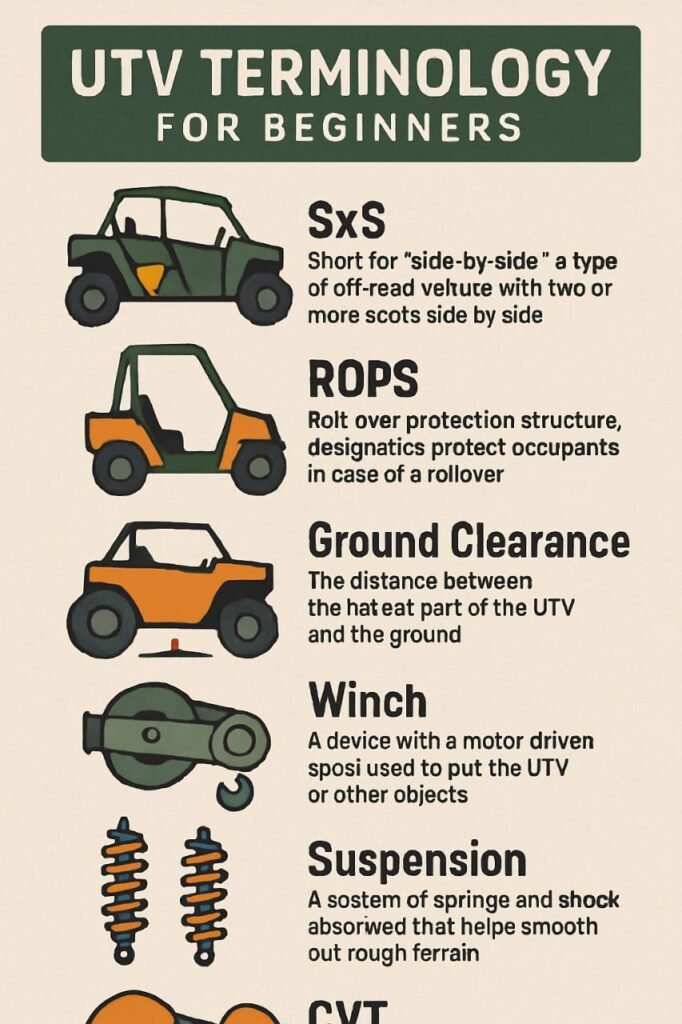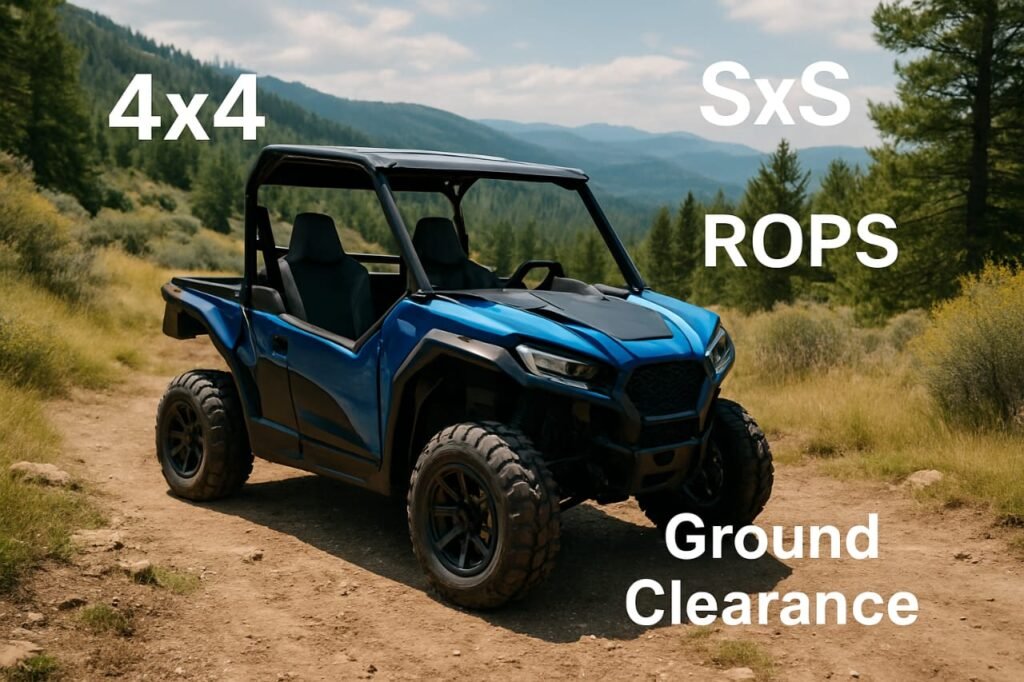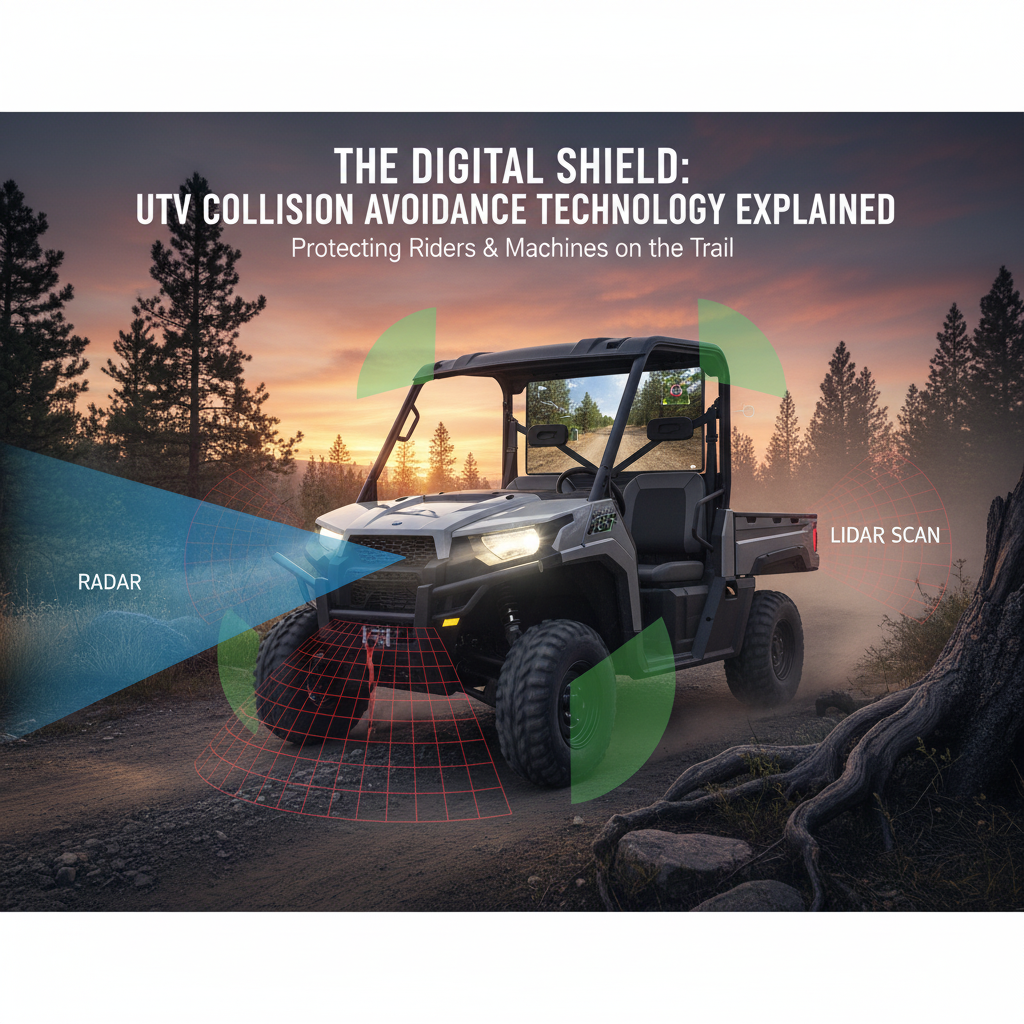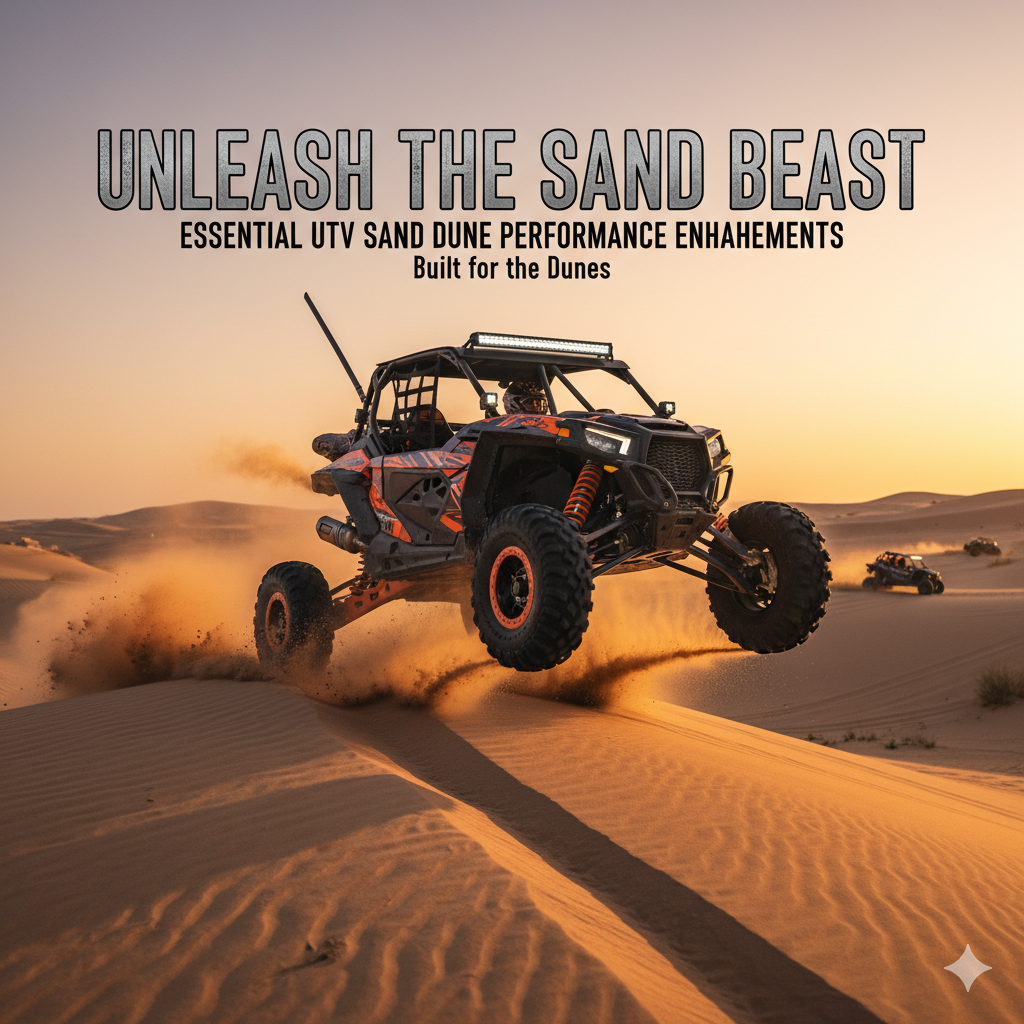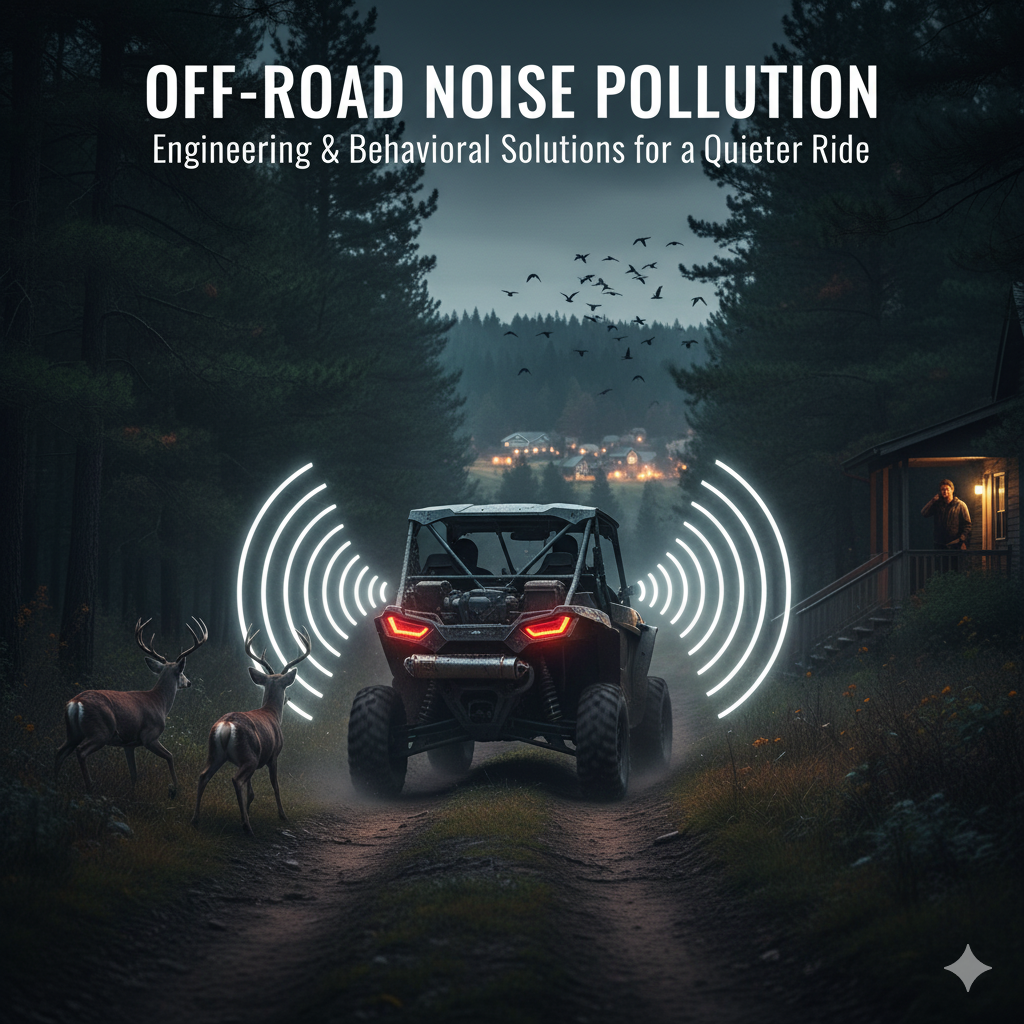Welcome to the exciting world of Utility Terrain Vehicles (UTVs)!
Whether you’re a seasoned off-roader or just starting your journey, understanding the unique language of UTV enthusiasts can sometimes feel like learning a whole new dialect.
From acronyms like ‘SxS’ and ‘ROPS’ to technical terms like ‘articulation’ and ‘ground clearance,’ the jargon can be overwhelming.
But don’t worry, you’re not alone, and this guide is here to help!
As a fellow enthusiast, I remember feeling a bit lost in conversations about UTVs, nodding along as if I understood, but secretly wishing someone would break down the lingo.
That’s why I’ve put together this comprehensive guide to UTV terminology, designed specifically for beginners.
My goal is to demystify the jargon, explain key concepts in plain language, and help you speak the language of the trails with confidence.
By the end of this post, you’ll not only understand what everyone’s talking about but also be better equipped to make informed decisions about your UTV and its accessories.
Let’s dive in and unlock the secrets of UTV lingo!
Common UTV Acronyms: Decoding the Alphabet Soup
One of the first things you’ll notice in the UTV community is the abundance of acronyms.
They’re used to quickly refer to different types of vehicles, components, or features.
Here are some of the most common ones you’ll encounter:
- UTV (Utility Terrain Vehicle): This is the overarching term for the type of vehicle we’re discussing – a side-by-side off-road vehicle, typically with a steering wheel and foot pedals, designed for utility and recreation. [1]
- SxS (Side-by-Side): Often used interchangeably with UTV, this term emphasizes the seating arrangement where the driver and passenger sit next to each other, similar to a car. [1]
- ATV (All-Terrain Vehicle): While similar to UTVs, ATVs are typically smaller, single-rider vehicles with handlebar steering and straddle seating. They are often referred to as quad.
- ROPS (Roll-Over Protection System): This is the protective cage or frame built into the UTV to protect occupants in the event of a rollover. It’s a critical safety feature. [2]
- CVT (Continuously Variable Transmission): A type of automatic transmission commonly found in UTVs that provides seamless gear changes, allowing the engine to operate at its most efficient RPM. [3]
- EPS (Electronic Power Steering): A system that uses an electric motor to assist the driver with steering, making it easier to maneuver the UTV, especially at low speeds or over rough terrain.
- EFI (Electronic Fuel Injection): A modern fuel delivery system that precisely controls the amount of fuel delivered to the engine, leading to better fuel efficiency, easier starting, and improved performance compared to carburetors.
- LED (Light Emitting Diode): A type of lighting technology commonly used for headlights, taillights, and accessory lighting on UTVs due to its durability, efficiency, and brightness.
Key Components and Systems: What Makes Your UTV Tick
Beyond the acronyms, understanding the basic components and systems of your UTV will help you better appreciate its capabilities and perform basic maintenance.
Here are some essential terms:
- Chassis/Frame: The foundational structure of the UTV, to which all other components (engine, suspension, bodywork) are attached.
-
Suspension:
The system of springs, shocks, and linkages that connects the wheels to the chassis, allowing the wheels to move independently over bumps and uneven terrain while keeping the body stable. Key terms related to suspension include:
- Shocks: Dampen the movement of the springs, controlling bounce and rebound.
- Springs: Absorb impacts and support the weight of the vehicle.
- A-Arms: A-shaped control arms that connect the wheel hub to the chassis, allowing for vertical movement of the wheel.
- Travel: The maximum distance the suspension can move up and down, indicating its ability to absorb large bumps and maintain tire contact with the ground.
- Ground Clearance: The distance between the lowest point of the UTV’s chassis and the ground. Higher ground clearance allows the UTV to pass over larger obstacles without scraping the underside.
-
Drivetrain:
The system that transmits power from the engine to the wheels. This includes the transmission, driveshafts, and differentials.
- 2WD (Two-Wheel Drive): Power is sent to only two wheels, typically the rear wheels.
- 4WD (Four-Wheel Drive): Power is sent to all four wheels, providing increased traction in challenging conditions.
- Differential: A mechanical device that allows wheels on the same axle to rotate at different speeds, which is crucial for turning. UTVs often have front and rear differentials.
- Differential Lock (Diff Lock): A feature that locks the differential, forcing both wheels on an axle to spin at the same speed. This provides maximum traction in slippery conditions but should only be used when needed, as it can hinder steering on solid ground.
-
Tires:
Specialized tires designed for off-road use, featuring aggressive tread patterns for grip on various surfaces. Key terms include:
- Tread Pattern: The design of the grooves and blocks on the tire surface, optimized for specific terrains (e.g., mud, sand, rock).
- Ply Rating: Indicates the strength and durability of the tire’s sidewall, with higher ply ratings offering more resistance to punctures.
- Beadlock Wheels: Wheels designed to mechanically clamp the tire bead to the rim, preventing the tire from coming off the wheel when running at very low tire pressures.
- Winch: A mechanical device, typically mounted on the front of the UTV, used for pulling the vehicle out of difficult situations (e.g., mud, deep snow) or for moving obstacles. It consists of a motor, a drum, and a cable or synthetic rope.
Performance and Capability: Understanding the Specs
When you’re looking at UTVs or discussing their performance, you’ll come across several terms related to their power, capacity, and handling.
Here are some important ones:
- Horsepower (HP): A measure of the engine’s power output. Higher horsepower generally means more acceleration and top speed.
- Torque: A measure of the engine’s rotational force. High torque is crucial for pulling power, climbing hills, and accelerating from a standstill.
- Payload Capacity: The maximum weight (including occupants, cargo, and accessories) that the UTV can safely carry.
- Towing Capacity: The maximum weight that the UTV can safely tow.
- Wheelbase: The distance between the centers of the front and rear wheels. A longer wheelbase generally provides a smoother ride and more stability at high speeds, while a shorter wheelbase offers better maneuverability in tight spaces.
- Track Width: The distance between the centers of the tires on the same axle. A wider track width generally improves stability and reduces the risk of rollovers.
- Articulation: The ability of the suspension system to allow the wheels to move independently and maintain contact with the ground over uneven terrain. Good articulation is essential for traction in challenging off-road conditions.
- Turning Radius: The smallest circular path a UTV can make. A smaller turning radius indicates better maneuverability.
Accessories and Modifications: Personalizing Your Ride
One of the most exciting aspects of UTV ownership is the ability to customize and accessorize your machine.
Here are some common terms related to modifications:
- Aftermarket: Parts or accessories that are not made by the original equipment manufacturer (OEM) but are designed to fit and function with the UTV. [4]
- OEM (Original Equipment Manufacturer): Parts or components that come directly from the UTV’s manufacturer.
- Lift Kit: A modification that raises the UTV’s suspension, increasing ground clearance and allowing for larger tires.
- Portal Gear Lift: A type of lift kit that uses gears at the wheel hubs to provide lift and gear reduction, often resulting in increased torque at the wheels and improved ground clearance without affecting suspension geometry as much as traditional lift kits.
- Light Bar: An aftermarket lighting accessory, typically an array of LED lights, mounted on the roof or front bumper to provide additional illumination for night riding.
- Windshield: A protective barrier mounted at the front of the UTV to shield occupants from wind, dust, and debris.
- Roof/Top: A cover for the top of the UTV, providing protection from sun, rain, and debris.
- Doors: Aftermarket additions that provide side protection and containment for occupants.
- Skid Plate: Protective plates mounted to the underside of the UTV to shield vital components (engine, transmission, differentials) from impacts with rocks and other obstacles.
- Snorkel Kit: A modification that raises the air intake and exhaust outlets of the engine, allowing the UTV to safely traverse deeper water.
Riding and Trail Terms: Speaking the Language of the Trails
Finally, when you’re out on the trails, you’ll hear specific terms related to riding styles, terrain, and common situations.
Here are a few:
- Trail Riding: General recreational riding on designated off-road trails.
- Rock Crawling: A technical riding style focused on navigating extremely rocky and uneven terrain at very low speeds.
- Mud Bogging: Driving through deep mud, often requiring specialized tires and powerful engines.
- Duning: Riding on sand dunes, typically requiring paddle tires and specific driving techniques.
- Washout: A section of trail eroded by water, often creating deep ruts or ditches.
- Whoops: A series of closely spaced bumps or undulations in the trail that can be challenging to navigate at speed.
- Pinstriping: Scratches on the UTV’s paint or bodywork caused by brushing against trees or bushes on narrow trails.
- Spotter: A person outside the UTV who guides the driver through difficult obstacles, providing visual cues and directions.
- Recovery: The process of freeing a stuck UTV using winches, recovery straps, or other equipment.
Conclusion: Speak the Language, Enhance Your Experience
Understanding UTV terminology is more than just knowing a few fancy words;
it’s about gaining a deeper appreciation for your machine, communicating effectively with fellow riders, and making informed decisions about upgrades and maintenance.
The world of UTVs is rich with technical details and a vibrant community, and speaking the language is your ticket to fully immersing yourself in it.
I hope this guide has helped demystify some of the common jargon and provided you with a solid foundation.
The more you ride, the more you’ll learn, and soon you’ll be teaching new riders the ropes!
So, go forth, hit the trails, and speak UTV with confidence.
Happy riding!
What UTV terms did you find most confusing when you started?
Share your thoughts and questions in the comments below!
